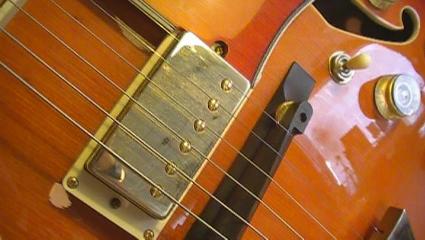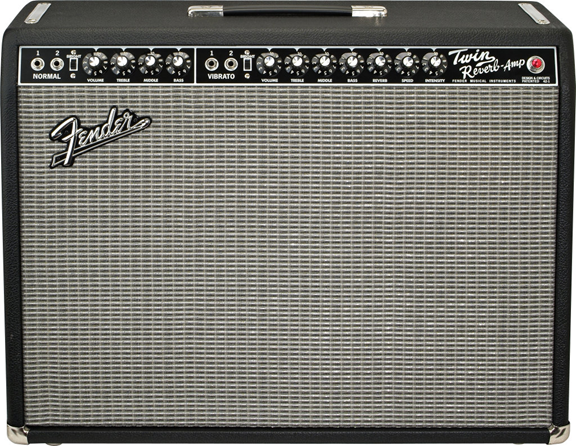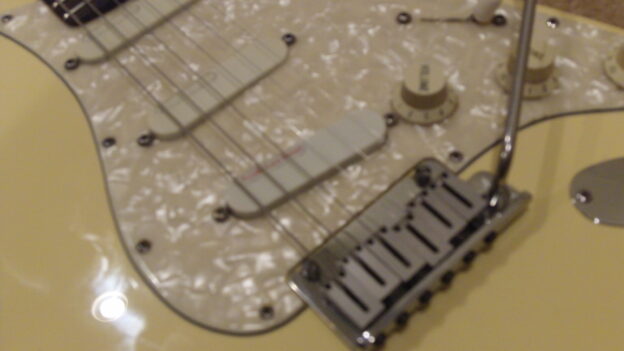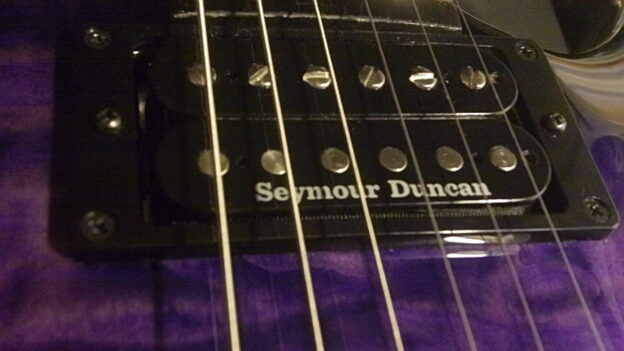Chad Crawford, PMI Guitar Instructor
After working diligently to hone your chops you attempt to play in front of a friend, family member, or maybe your guitar teacher. You find that all of a sudden you can’t remember what to play, or your fingers just won’t do what you are telling them. You may find that your hands shake. Some people even experience nausea. Psychologists call this phenomenon “performance anxiety”. We musicians call it “stage fright”. It is very uncomfortable and frustrating, and you may be inclined toward giving up music if you can’t find a way to get around stage fright so that you can enjoy sharing your music with others. After all, in the end music is a form of communication, so it defeats the purpose if you can’t share it with others.
Fortunately, stage fright is something that musicians have learned to manage. It may never go away entirely, but we can learn to control it so that it does not cripple our performance. Since this article is directed at hobbyist students of guitar, I am going to limit discussion to those elements pertinent to hobbyists.
Stage fright is a “phobia”, or “irrational fear”. It is extreme dread of humiliation that will accompany failing in front of others. Let us not pretend that concern with performing poorly in front of others will not be embarrassing. However, when we allow emotion to run rampant and magnify the concern to extremes, we then cross the line into being irrational and become physically and mentally crippled by overpowering reactions to the emotion of fear. Here is how it works: we get ready to play something under observation. We become aware of the possibility of making a mistake. At this point we are still rational. Then the emotions flood in: humiliation and dread. Under the influence of these emotions, we become even more sensitive to the possibility of making a mistake. This affirms the emotions of humiliation and dread and the emotions become stronger and cross over into irrationality. Another part of the mind picks up the powerful emotions of impending doom and perceives this as a danger warning. This triggers a “fight or flight” response. We lose partial control of our thoughts to the processing of instinctive fear responses. The body tenses up and the mind attempts to focus on the source of danger and the easiest escape. Now we are distracted mentally and also physically tense all over. At this point we may be resigned to the fact that our performance is not going to be at peak because we have become partially crippled by our body’s automatic reactions to fear. It is a snowball effect, from initial perception of risk to manifestation of confusion and physical tension. It all happens in a split second, before we even have a chance to strike a note on the guitar.
The important thing to note here is that the stage fright response begins with thoughts, drags the emotions along, and then the emotions trigger the instinctive responses that interfere with performance. We want to break into this process at every point possible and try to reverse it, control it, or squash it by every means available. Let’s start with thoughts …
Strategies for dealing with the thought element of Stage Fright …
(1) What happens if someone sees you make a mistake or perform at less than your best? Well, you won’t get full credit for that great stuff you pull off while practicing alone. That’s kind of annoying and unfair, isn’t it? You may experience the discomfort of embarrassment. Is that really such a big deal as to allow it to trigger the same response as if an angry bear were chasing you? Of course not. It is not that big of a deal, especially when you are performing for your guitar teacher where it is fully expected that you are going to make many mistakes on a routine basis.
As an experienced musician with a trained perception of pitch, I can tell you that even acclaimed professional guitarists make mistakes in their live performances. You and I are going to make mistakes also. Just accept it, and more importantly just learn to play past the mistakes. Just get back on track as quickly as you can and keep playing. Don’t ever quit trying to improve and eliminate as many mistakes as possible, but accept the fact that mistakes are going to happen and they do not mean your entire performance is a failure. The fact is, if you keep playing through then most people will not even notice your mistakes! So don’t give them way more attention than they deserve. Make it a habit to mentally mark mistakes for additional work later and immediately focus your mind back on the next note!
(2) If you are worried about what others think of your skills, just stop doing that. Most people are not thinking about you. They are thinking about themselves. That’s the way people are. Some people are just determined to criticize, and so they will, no matter how well you play. Do your thing and forget about what anyone thinks of it. Yngwie Malmsteen is one of the top guitarists alive right now. Most people have never heard of him. Among those who have many of them are not moved by his music even though they may acknowledge his mastery of the instrument. I know of many outstanding guitarists who have amazing skills that I admire, but their music itself does nothing for me. No matter how good you are, you are only going to connect with a small fraction of the people who ever hear you play. So it makes no sense to give too much thought to how any one person is going to react to your playing. It is a total waste of your mental powers to think on such things. If these thoughts arise, cast them aside.
(3) Master the material you intend to play for others. If you know the song and have repeated it enough that it is automatic for you, your mind and hands will deliver even if you are under stress. Think about it. You had to learn to walk and talk. Now you can do both even under the most extreme distraction. They are automatic for you. Make your guitar skills the same through diligent practice.
Strategies for dealing with the emotional element of Stage Fright …
(1) Understand that stage fright is normal. It happens to all of us. It is not some unusual thing you are wrestling with, and it has nothing to do with your “talent” for music or lack thereof. It is a typical response to stress and it is possible for you to learn to control it, no matter how powerful it may seem to grip you at first.
(2) Play in front of others. Now if you just started lessons two weeks ago it’s not time for you to play in front of others. Be reasonable about this. Learn some songs. Practice them until you can get through them most of the time without any major train wrecks. Then play them for others. Start a band with others near your skill level. Join local amateur musician clubs. Play for your family. You will undoubtedly experience stage fright in these situations. However, every time you expose yourself to it you will gain a measure of strength against it, just as your finger tips build calluses against the guitar strings. Eventually stage fright will fade to something far less powerful and thus you will find it easier to manage.
(3) Master the material you intend to play for others. If you know the song and have repeated it enoughthat it is automatic for you, your mind and hands will deliver even if you are under stress. Think about it. You had to learn to walk and talk. Now you can do both even under the most extreme emotional inflammation. They are automatic for you. Make your guitar skills the same through diligent practice.
Strategies for dealing with the instinctive element of Stage Fright …
(1) When you feel your hands freezing up and your mind is drawing a blank as to what to play, remember that you are ultimately in control of your mind and your body. Instinct is powerful but you can learn to override it. Force your mind to calm and focus on controlling your hands and your thoughts. Relax your muscles. Concentrate on the chords or scales you need to play and push everything else aside. This is going to be tough at first, but keep at it and you will get better with practice.
(2) Master the material you intend to play for others. If you know the song and have repeated it enough that it is automatic for you, your mind and hands will deliver even if you are under stress. Think about it. You had to learn to walk and talk. Now you can do both even if an angry bear is chasing you. They are automatic for you. Make your guitar skills the same through diligent practice.
Stage fright is an inevitable aspect of the journey toward musical mastery. Don’t run away from it … run into it and conquer it. Give yourself time. You may have noticed that in all three areas of attack, the last strategy is the same paragraph in mastery of your material. That was not an editing oversight. As with all things musical, results follow one simple rule of thumb: practice, practice, practice!
Copyright © 2005 Palmetto Music Institute. All Rights Reserved.




